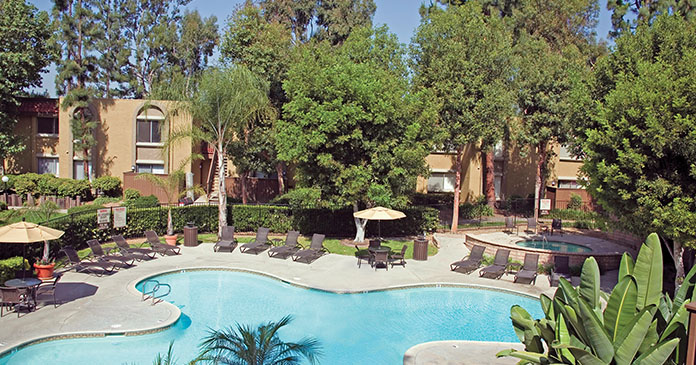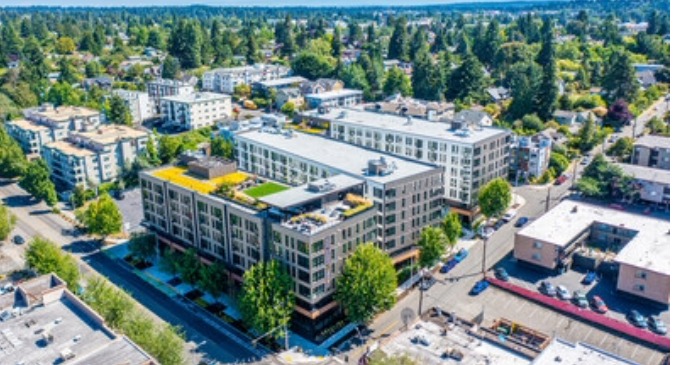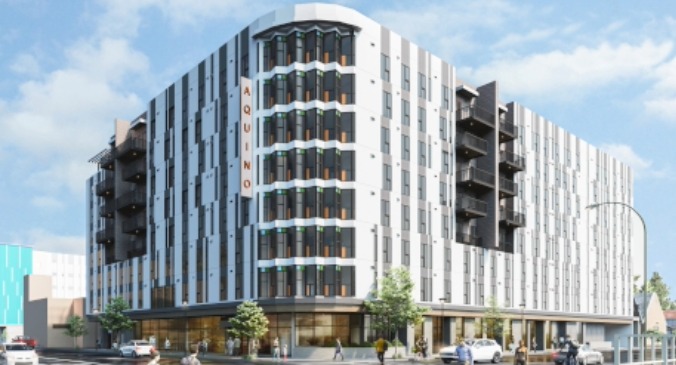
At the height of the market a few years ago, reports of a firm purchasing two properties in a year’s time would have registered as a mere blip on the industry radar screen. Today, those deals could indicate a turning point in the marketplace.
According to Marcus & Millichap’s The Apartment Outlook 2010, the emergence of private local buyers may represent the clearest signal yet that prices have adjusted to levels that can be sustained by current operations. Motivated by lower prices, these investors will continue to re-evaluate portfolios, using local knowledge and a hands-on approach to acquire properties with the potential to increase in value as a recovery accelerates. With other buyer groups less active, private local investors are likely to conduct transactions on highly favorable terms, especially with motivated sellers, according to the report.
Not that they will have an easy row to hoe. Raintree Partners CEO Jeffrey Allen said his greatest challenge is finding property that generates an appropriate risk-adjusted return given the current state of the economy.
“It’s been extremely hard to find attractive opportunities and we’ve turned over a lot of rocks in our search. We seriously reviewed 150 projects over the past year, not all of which came to market. A lot of the properties we made offers on were taken off the market after the sellers decided that prospective buyers weren’t willing to pay the prices the sellers thought were attractive enough to close the deal,” said the 30-year industry veteran, who formed Raintree Partners in December 2007 through a merger of interests with J.B. Allen Realty, the development company he launched in 1999.
J.B. Allen Realty focused on mixed-use and multifamily projects in Southern California and, prior to merging its interests into Raintree Partners, acquired and entitled four development projects in the region with total project costs of more than $350 million.
Soon after forming Raintree, Allen negotiated and closed a JV called Raintree Evergreen with pension fund advisor Evergreen Investment Advisors, which committed $200 million to the enterprise. “That, plus the capital we co-invest in the venture, is our equity source,” said Allen.
He initially assumed Raintree would focus on development, but soon realized that the company’s efforts would best be spent on acquisitions of assets with a value-add component, even though adding value would have to wait until rent growth could support the capital investment.
“As the economy unwound, we put the development business on the shelf and started focusing all of our efforts on acquiring existing properties, which includes value-added deals that have some type of redevelopment, rehab or repositioning story to them,” he said.
Raintree closed on its first acquisition last April, paying $38.25 million for the 20-year-old, 204-unit Trellis Square in Sunnyvale, in the heart of the Silicon Valley. The cap rate on the deal was slightly north of seven percent, based on anticipation of first year earnings and trailing three month seller financials, said Raintree Acquisition Director Aaron Hancock.
Built and managed by Prometheus and renovated in 2006, Trellis Square consists of one- and two-bedroom apartments, including 20 affordable units, averaging 830 sq. ft. and renting for slightly under $2 per sq. ft. Occupancy, which was around 94 percent at close of escrow, has increased to around 96.5 percent under the new management of Alliance Residential.
Fannie Mae provided 75 percent LTV financing with an interest rate of 5.34 percent, fixed for 10 years, through DUS agent Troy Tegeler and Bethany Bailey of CBRE Capital Markets. William Huberty and Matthew J. Holmes of CB Richard Ellis’ San Francisco office represented both parties in the deal.
Trellis Square was one of eight mostly California assets listed for sale by Milwaukee-based Northwestern Mutual Life Insurance. “When they came to market there wasn’t a lot of clarity. The sale of that portfolio in the first and second quarters of last year provided much more clarity in the market and cap rates have come in 75 to 100 basis points on the bid since then,” said Raintree Associate Jason Check.
Raintree acquired its second apartment community, the 31-year-old, 168-unit Mountain View, from AIMCO in the second week of December. The $20.865 million acquisition was financed with the assumption of a $14.5 million Fannie Mae loan with PNC ARCS that carries an interest rate of 6.1 percent and matures in 2019.
“AIMCO had this asset on the market with several others that were pulled off at the end of the year, but they came back to us on this one,” said Check, who puts the expected yield, based on value-add first-year income, at just north of eight percent. Like Trellis Square, the property had been partially renovated within the past several years.
Mountain View is located in the San Dimas sub-market of Los Angeles’ Eastern San Gabriel Valley, a community that is noted for its excellent public school system. “The property is near the intersection of the 57 and the 210 freeways and not far from I-10 and has great transit infrastructure. Eventually, the Gold Line light rail system will be extended into Eastern San Gabriel Valley and will include a stop approximately a half-mile from the community.
“In addition, there are 90,000 jobs and roughly 70,000 college students within an eight-mile radius, so there is a large population base of potential renters,” said Hancock.
Average effective rents are $1.40 per sq. ft. for the property’s two- and three-bedroom apartments that average 1,000 sq. ft. Occupancy at the community is 95 percent. Raintree was represented in the transaction by Sean P. Deasy of CB Richard Ellis’ Ontario office. Alliance Residential has been retained to manage the asset and will focus on maintaining occupancy by offering competitive rents and good product.
“We don’t focus on the concessions game,” said Check. “And as the new buyer, we can look at things differently since we were not part of the decline that unfolded over the past 18 months. What’s unique about these two deals is we have the ability to market both renovated and non-renovated apartments because both properties had been partially upgraded by the seller, giving us the ability to attract a wider audience—those who look for value and those who want and are able to pay for a renovated unit.”
Raintree is sitting on plenty of dry powder and is targeting multifamily acquisitions and, when the timing is right, development deals, in the range of $10 million to $100 million.
Check believes there will be land acquisition opportunities and additional opportunities to buy existing assets as properties transition ownership from owners to banks through foreclosure.
“We have our eye on Phoenix, Las Vegas and, at some point, may start to look in the Pacific Northwest. For the foreseeable future, however, we will stay focused on value-add acquisitions in Southern California, the Bay Area and, selectively, Sacramento. There is plenty of business for us right here and we know these markets well by virtue of the fact we are based in California and it’s logistically easy for us to move around in the state,” said Allen.
“We would love to buy at least four or five properties in 2010, but whether we can achieve that goal is another matter. We have plenty of capital to be aggressive buyers and, so far, it appears the GSEs—Fannie and Freddie—are staying committed to the apartment business in terms of providing mortgage capital. The real challenge is identifying quality properties that are available at the prices we can afford to pay in order to get the returns our investors expect, which typically is leveraged IRR in the mid- to high-teens.
“We have been actively courting REITs, pension funds, other institutional investors and private equity investors who might be potential sellers. We’ve been looking at any and all sources of potential sales and there has been very little in the way of a wholesale disposition strategy that has been embarked on by any particular group of owners,” said Allen.
And, although hopeful investors continue to form new investment funds targeting distressed assets, Allen isn’t seeing many of those deals come to market.
“Interestingly, if you have a property and put a distressed label on it during the sales process, it seems to draw a lot more buyer interest than deals that don’t have the distressed label on them, but they are not selling at distressed prices, at least in our view,” he said.
“There are those who have debt maturing and have to sell at prices that can’t support the current cost basis. Those kinds of sellers are being forced to sell at a loss. Valuations have come way down over the past two or three years. Owners who don’t have a gun to their head are very reluctant to market their properties today because they don’t feel they can get the values they would expect to get for the assets they have.
“Of course, there always are owners out there who have a strategic plan that requires they generate capital in order to redeploy into other business opportunities and those people are certainly finding an active buyer market today. There is no lack of capital in the market with which to buy property. In fact, over the course of the last nine months, we have seen a tremendous uptick in the level of prospective buyer activity,” said Allen, who typically is up against 30 to 40 other prospective buyers in the deals his firm is bidding on today as compared to a half dozen bidders in early 2009.
“It really is a commentary on the renewed confidence in the multifamily sector and lack of product supply being marketed today,” he said.















